Nylon, a branch of synthetic polymers, is a tough and durable material originally seen in textiles. The technical name for the material is polyamide (PA), while the common name is “nylon” (despite some still associating it with stockings). The material stands out for its toughness and its resistance to high temperatures and impacts. It also has a very low coefficient of friction.
Nylon comes in a few variants, which are designated by numbers. Two common ones are PA 11 and PA 12, which have strong all-round properties and low moisture absorption (more on this later). Between the two, PA 11 has higher temperature and UV resistance, along with better flexibility. Regardless, both materials are most commonly used with SLS and MJF technologies, and not in filament-based processes. As such, they’re largely out of the scope of this article.
More common in filament-based printing, along with manufacturing in general, are PA 6 and PA 66. Both are popular for their high processability and low cost, with PA 6 more common in 3D printing for its slightly better processability. These materials, however, suffer from higher moisture absorption, which can degrade the polymers. As such, proper material storage is a must.
Printing & Storage
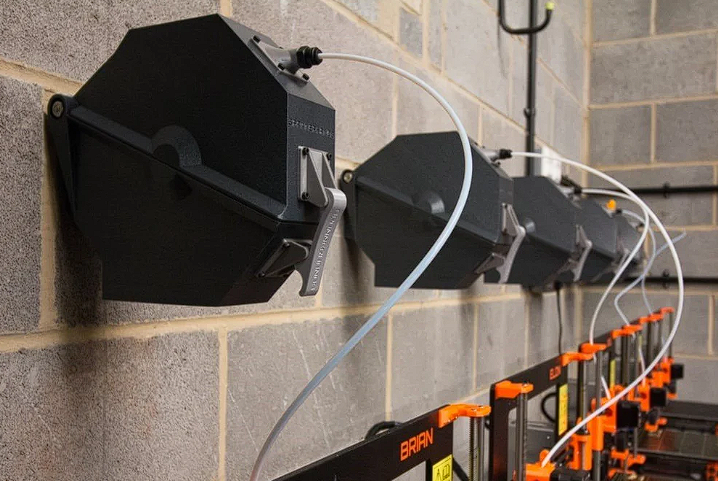
Nylon used to be quite a challenging material to print with, but manufacturers have made it much more approachable in recent years. While you shouldn’t expect it to print as easily as PLA or PETG, printability shouldn’t be a deal-breaker for entry. Here are the basic print settings we recommend for nylon:
- Nozzle temperature: 240-290 °C
- Bed temperature: Up to 65 °C
- Bed surface: PVA glue stick, Magigoo, Garolite, 3DLac
- Print speed: 25-50 mm/s
- Fan speed: 0-50%
- Enclosure: Recommended, but not necessary
While these general settings should serve you well, materials vary by manufacturer. Before printing anything, it’s always a good idea to check the recommended settings. For the brands we’ve listed below, we’ve compiled the specific information for you.
Storage
As we’ve alluded to, proper storage for nylon is critical. The variants used in 3D printing are extremely hygroscopic, meaning they absorb moisture. This moisture degrades the material and yields poor print quality and strength.
To avoid wet filament problems, store your filament in a dry environment. We recommend a few options in our filament storage guide. Since nylon can go bad in even a few hours, we also recommend printing directly from a humidity-controlled container. This could be a dry box with a filament feed hole or a humidity-controlled spool holder.
Should your nylon pick up some moisture, you’ll want to dry your filament.
With that said, we’re ready to get into the best nylon brands!
MatterHackers Pro Series Nylon

MatterHackers Pro Series Nylon is a well-priced, high-quality filament with a wide range of uses. While other nylon filaments only come in grayscale colors, Pro Series Nylon is available in a whole range of vibrant options. You’ll find this combination of price, quality, and excellent colors in few other places.
- Nozzle temperature: 240-260 °C
- Bed temperature: 60 °C
- Bed surface: PVA glue stick
- Diameters: 1.75 mm, 2.85 mm
- Price: ~$55 for a 750-g spool (~$55 for a 500-g spool of the carbon fiber variant)
- Colors: Black, white, green, gray, blue, red, orange
Overture Nylon

Overture Nylon is an affordable filament option for makers – especially beginners – looking to produce good results at minimal cost. Since it has anti-warping properties, it will eliminate many issues when it comes to 3D printing with nylon filament. Additionally, it’s odorless.
However, it’s a little brittle so it may crack under certain pressure. That said, at an affordable price point and minimal warping, it’s ideal for beginners.
- Nozzle temperature: 250-270 °C
- Bed temperature: 25-50 °C
- Bed surface: PVA glue stick
- Diameters: 1.75 mm ±0.05
- Price: ∼$33 for a 1-kg spool
- Colors: Black, gray
eSun ePA Nylon
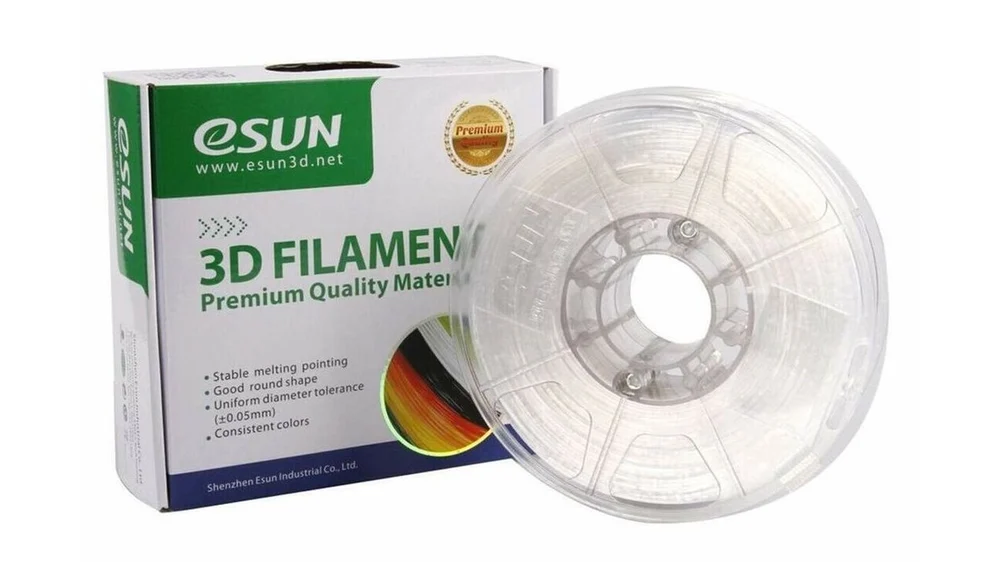
The eSun ePA Nylon filament offers mid-range quality, and is solid and tough. It’s also flame retardant, with a level of UL94-V2. As it comes in a natural color, it’s ideal for painting. For first layer adhesion, a first layer print speed of 10 mm/s works well.
With all that said, this filament does warp and has difficulty with printing sharp corners. However, this can be fixed with a brim to hold down sharp edges. For larger models, it’s recommended that you use a thicker brim as well as increase the flow rate.
- Nozzle temperature: 230-260 °C
- Bed temperature: 80 °C
- Bed surface: PVA glue stick
- Diameters: 1.75 mm ±0.05
- Price: ∼$38 for a 1-kg spool
- Colors: Natural (ideal for dyeing)
ColorFabb PA Neat
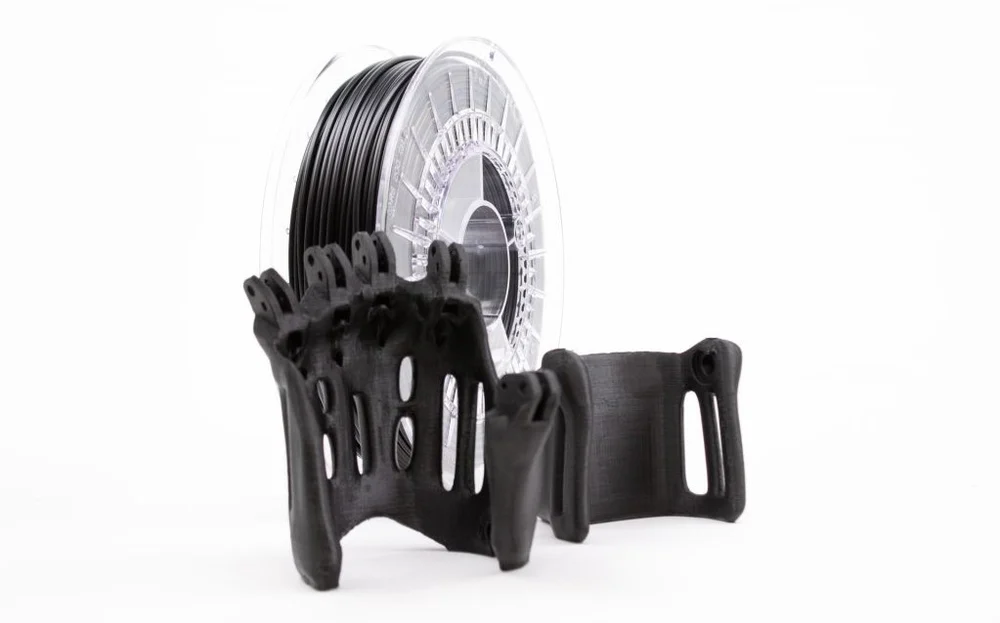
PA Neat from premium filament maker ColorFabb boasts features similar to Polymaker’s PolyMide CoPA. Also tuned for low warping, it’s capable of surviving continued use at 120 °C while retaining mechanical properties (a different metric than softening temperature). Tensile strength is also slightly higher than PolyMide CoPA.
Note: This filament is stiff, so ColorFabb recommends that users of 2.85 mm filament use a spool mount with some friction between the spool and the spool holder to prevent unspooling.
- Nozzle temperature: 265-290 °C
- Bed temperature: Up to 50 °C
- Bed surface: 3DLac
- Diameters: 1.75 mm, 2.85 mm
- Price: ~$69 for a 750-g spool
- Color: Black
Polymaker PolyMide CoPA
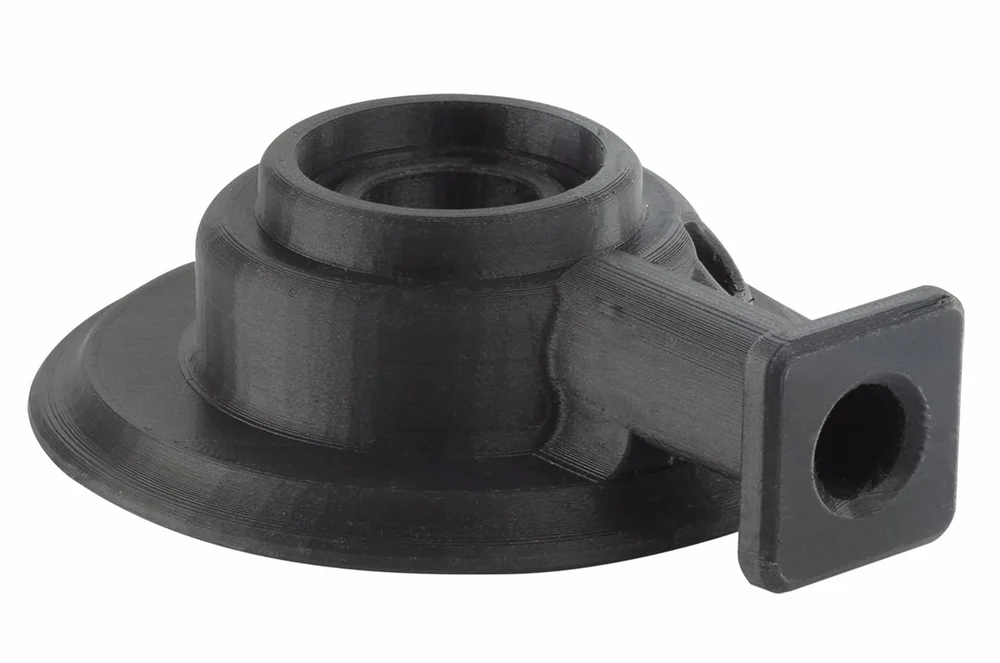
A copolymer of PA 6 and PA 66, Polymaker PolyMide CoPA is designed with both printability and performance in mind. It features spectacularly low warping while only softening at an impressive 180 °C. This unique combination of features makes printing for demanding applications significantly more straightforward.
- Nozzle temperature: 250-270 °C
- Bed temperature: 25-50 °C
- Bed surface: PVA glue stick
- Diameters: 1.75 mm, 2.85 mm
- Price: ~$60 for a 750-g spool
- Colors: Black, natural
Ultimaker Nylon
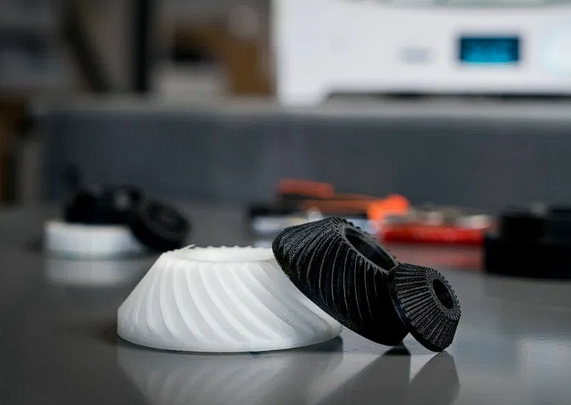
Another copolymer of PA 6 and PA 66, Ultimaker Nylon is a premium filament. It offers solid all-round performance and has been tuned for lower moisture absorption. Ultimaker and Cura users will also benefit from integration into the Ultimaker ecosystem.
For those with Ultimaker’s S5 Pro Bundle, nylon’s finicky storage requirements can be taken care of with the Material Station.
- Nozzle temperature: 230-260 °C
- Bed temperature: 60-70 °C
- Bed surface: PVA glue stick, Magigoo PA
- Diameter: 2.85 mm
- Price: ~$70 for a 750-g spool
- Colors: Black, transparent
ColorFabb PA-CF Low Warp
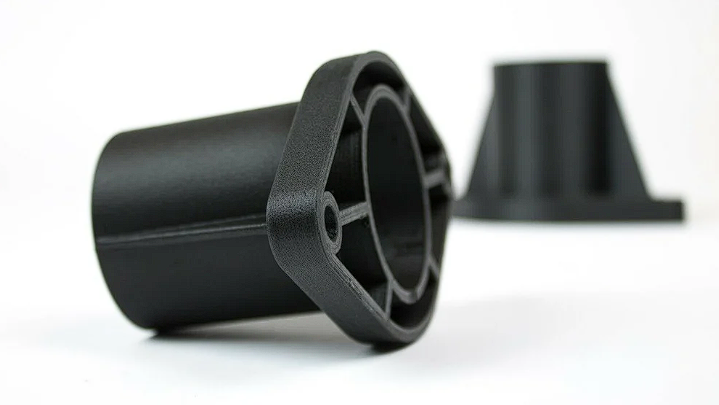
ColorFabb PA-CF Low Warp has many of the benefits of ColorFabb’s PA Neat; it also prints nearly warp-free, and it features a continuous service temperature of 120 °C. What it has over PA Neat is the addition of carbon fibers. These dramatically increase the stiffness and tensile strength of the material, which makes it perfect for parts that have to be strong and hold their shape.
Note: Like PA Neat, this filament is stiff, so ColorFabb recommends that users of 2.85 mm filament use a spool mount with some friction between the spool and the spool holder to prevent unspooling.
- Nozzle temperature: 260-280 °C
- Bed temperature: Up to 50 °C
- Bed surface: 3DLac
- Diameters: 1.75 mm, 2.85 mm
- Price: ~$92 for a 700-g spool
- Color: Black
MatterHackers Nylon Composites
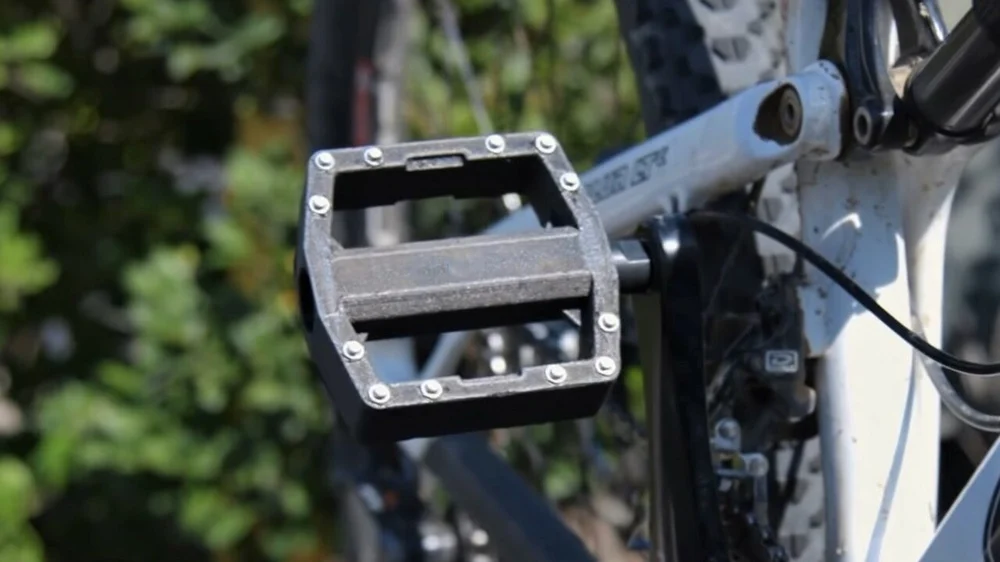
Here, we have Matterhacker’s high-performance line of nylon composites. These three filaments are infused with various other materials for specific properties and applications: NylonX has carbon fibers for stiffness and strength, NylonG has glass fibers for impact resistance, and NylonK has Kevlar fibers for abrasion resistance. Depending on what you need, you can pick the right material with the right properties for a range of demanding applications.
MATTERHACKERS NYLONX
- Nozzle temperature: 250-265 °C
- Bed temperature: 60-65 °C
- Bed surface: PVA glue stick
- Diameters: 1.75 mm, 2.85 mm
- Price: ~$58 for a 500-g spool
- Color: Black
MATTERHACKERS NYLONG
- Nozzle temperature: 245-265 °C
- Bed temperature: 65 °C
- Bed surface: Garolite, Magigoo
- Diameters: 1.75 mm, 2.85 mm
- Price: ~$64 for a 500-g spool
- Colors: Red, orange, white, blue, olive green, silver, desert tan
MATTERHACKERS NYLONK
- Nozzle temperature: 250-265 °C
- Bed temperature: 60-65 °C
- Bed surface: PVA glue stick, unheated Garolite
- Diameters: 1.75 mm, 2.85 mm
- Price: ~$68 for a 500-g spool
- Color: Black
Source: https://all3dp.com/2/nylon-filament-pa-basics-best-brands/